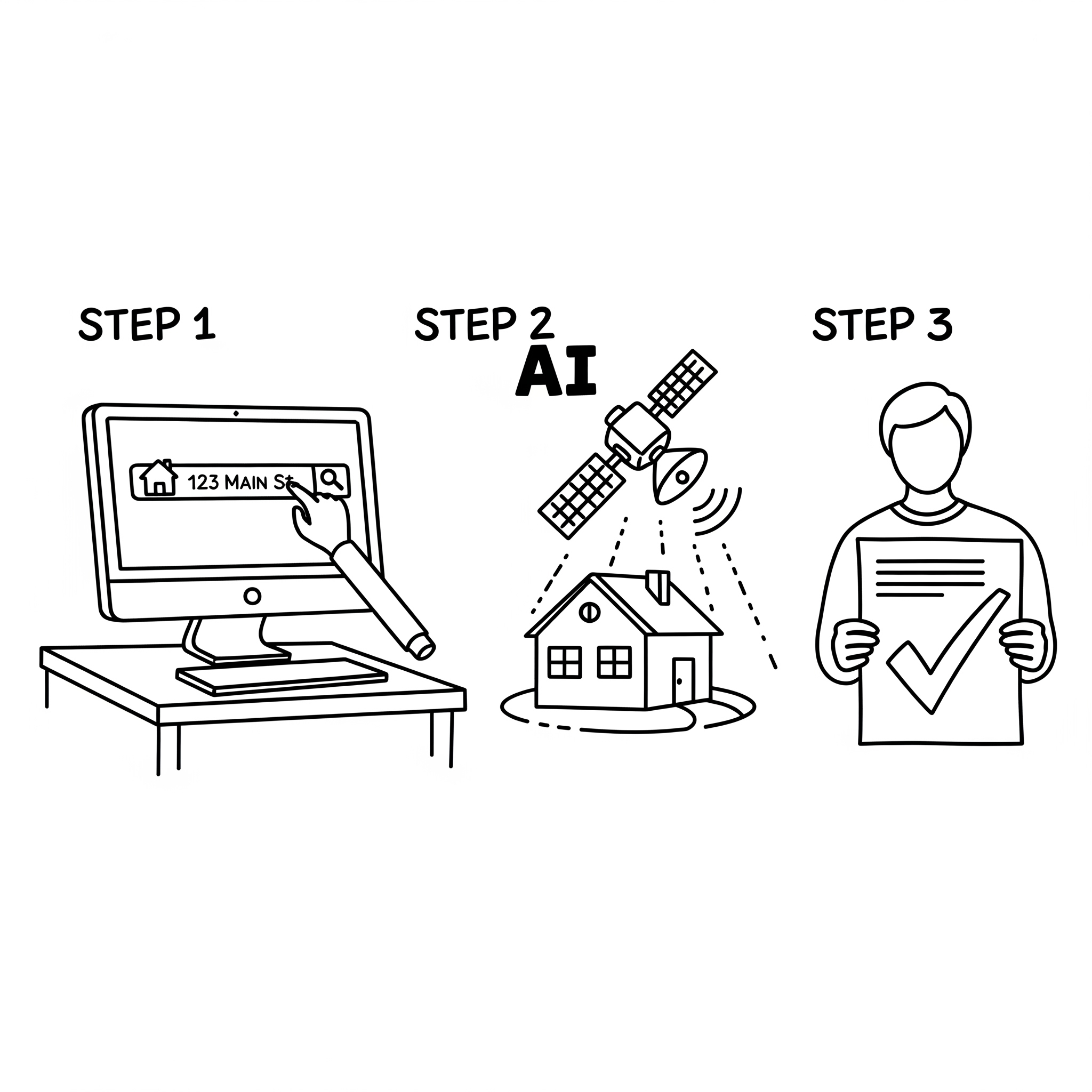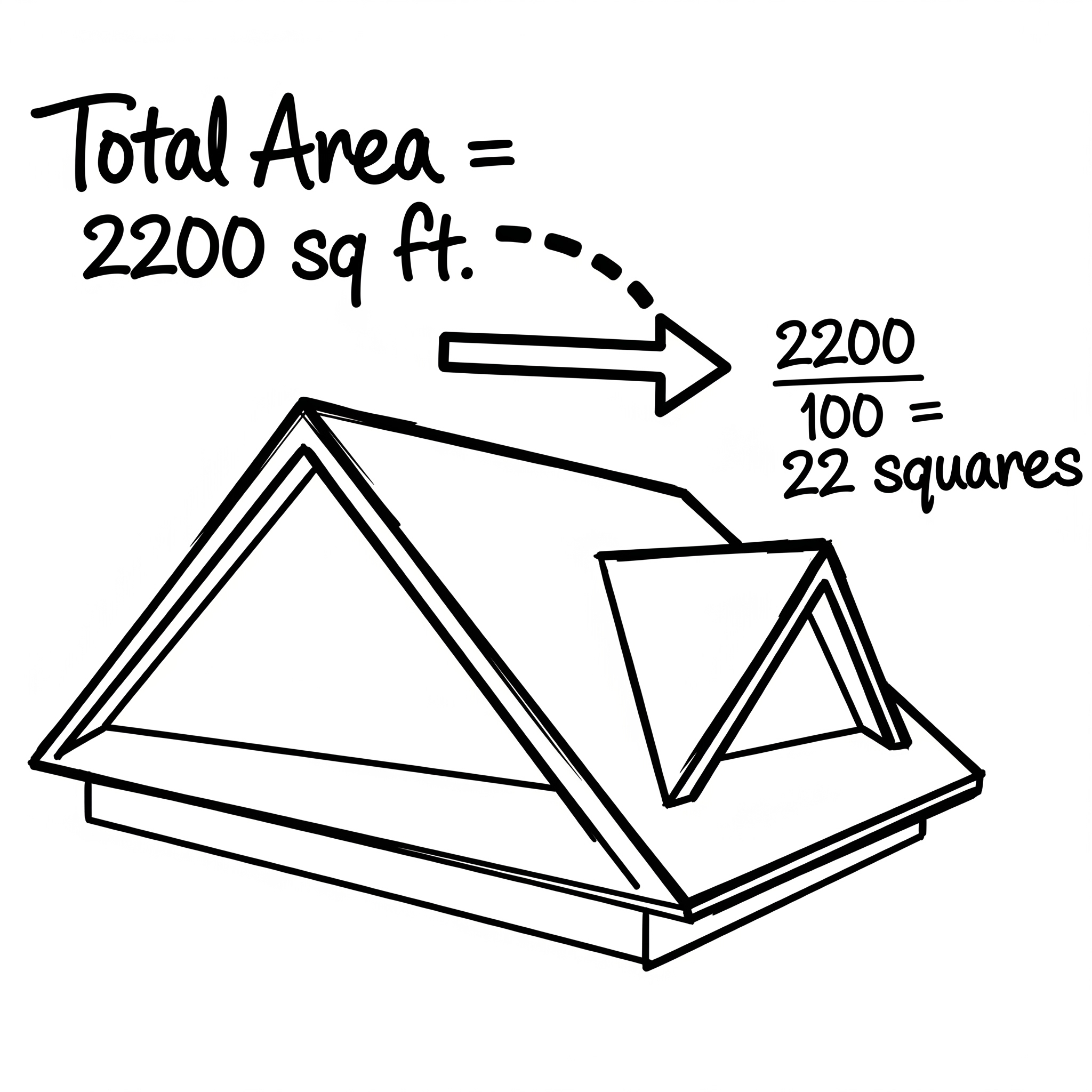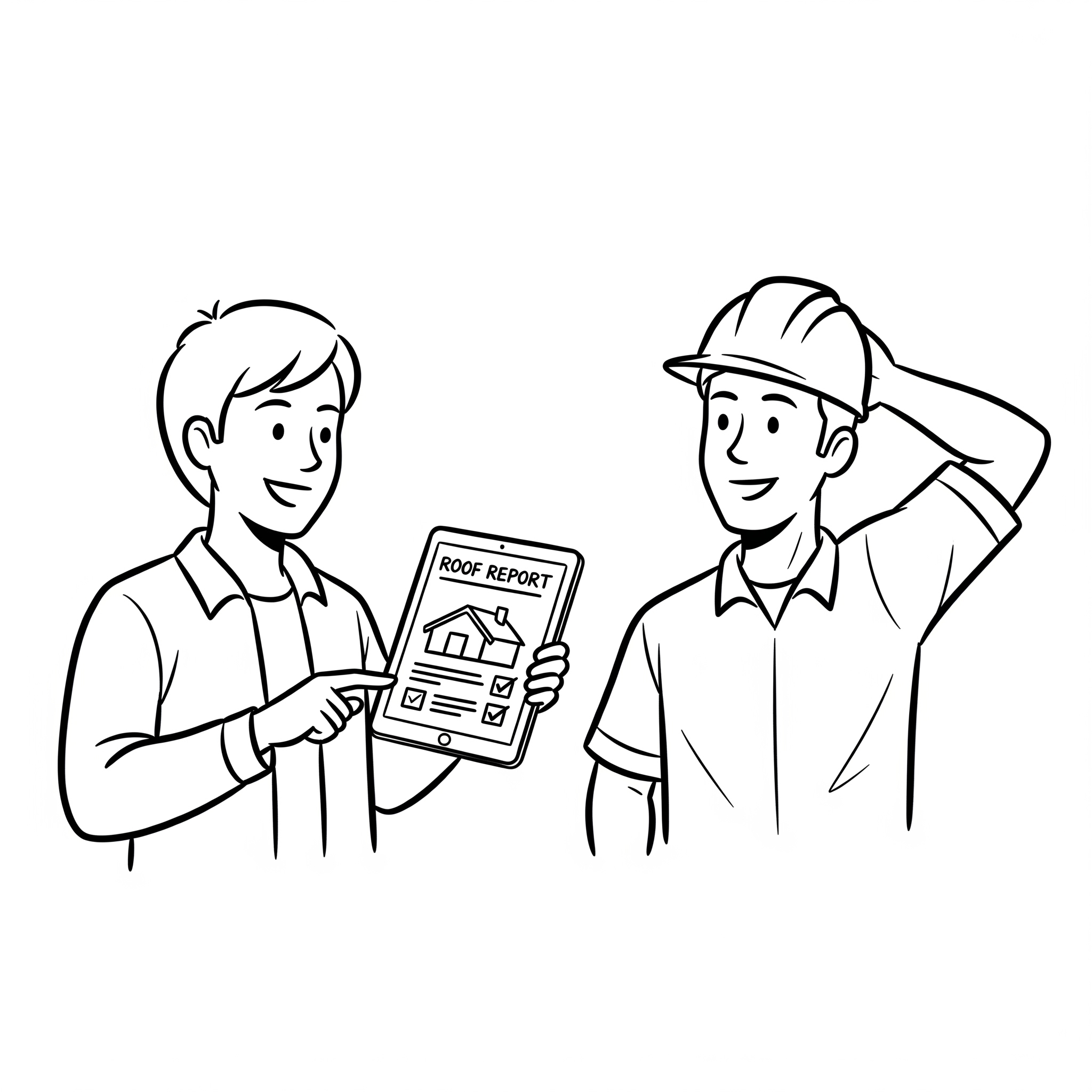The Homeowner's Guide to Starting Your Roofing Project
Starting a roof replacement project can feel overwhelming. From finding a trustworthy contractor to understanding the costs, there are many variables to consider. But what if you could take the first, most crucial step for free, without ever leaving your chair? An accurate roof measurement is the foundation of a successful project, and thanks to modern technology, getting one is easier and safer than ever.


Roof Measurement Essentials
This guide is designed for homeowners who want to get free roof measurements from satellite imagery. We'll walk you through how to use our AI-driven tool at Measure My Roof to get an instant estimate of your roof's area. With this information, you'll be able to plan your budget and communicate effectively with contractors.
How to Get a Free Roof Measurement in Seconds
Forget climbing ladders or waiting for a contractor to call you back. Our platform uses high-resolution satellite imagery and AI to deliver a roof area estimate in just a few clicks. It's fast, completely free, and, most importantly, safe.
Here’s how simple it is:
- Enter Your US Property Address. Navigate to the Measure My Roof web app and type in the full address of the property you want to measure.
- Let the AI Work Its Magic. Our system will instantly pull up-to-date satellite images of your property. The AI then gets to work, analyzing the imagery to identify the features of your roof.
- Receive Your Free Report. Within seconds a roof area estimate is generated. You'll see the total square footage of your roof, which is the key number you need to begin planning your project.


Understanding Your Free Roof Measurement Report
Your report from Measure My Roof gives you the essential data you need. But what do the numbers actually mean? Let's break it down.
- Total Roof Area (in Square Feet): This is the primary measurement of your roof's surface. It's not just the footprint of your house; our AI calculates the true surface area by accounting for the roof's pitch. A steeper roof has more surface area than a flatter one on a house of the same size.
- Roofing Squares: In the roofing industry, materials are sold by the "square." One square = 100 square feet. To figure out how many squares your roof is, simply take the total square footage from your report and divide it by 100.
Example: If your report says your roof is 2,150 square feet, you would calculate:
2,150 ÷ 100 = 21.5 squares. Since you can't buy half a square of shingles, you would round up to 22 squares.
Using Your Measurement to Talk to Contractors
With your free satellite roof measurement in hand, you are no longer starting from zero. You are now an informed homeowner who can engage with roofing professionals confidently.
- Getting Initial Quotes: When you call contractors for estimates, you can tell them, "I have a preliminary measurement showing my roof is approximately 2,200 square feet." This gives them a solid baseline to provide a much more accurate initial quote for materials and labor.
- Understanding the "Waste Factor": No roofing project uses the exact amount of material calculated. Contractors always add a "waste factor" to account for the material that is cut and discarded around hips, valleys, and chimneys.
- For a simple gable roof (a basic triangular shape), a 10% waste factor is common.
- For a more complex hip roof with many angles, a 15% or higher waste factor is standard.
Example: For a 22-square roof with a 15% waste factor, a contractor would order:
22 squares × 1.15 = 25.3, which is rounded up to 26 squares of shingles. - The Importance of a Final On-Site Inspection: A satellite measurement is incredibly accurate for area, but it can't see everything. It can't tell if the wood decking underneath your shingles is rotten or if the flashing around your chimney is cracked. A reputable contractor will always perform a physical, on-roof inspection before signing a final contract. Your satellite measurement gets you a reliable estimate, and their inspection finalizes the details.


The DIY Alternative (And Why We Don't Recommend It)
Before satellite technology, the only way to measure a roof was to do it by hand. While possible, this method is slow, difficult, and carries significant safety risks. It involves:
- Sketching the Roof. Drawing a top-down diagram of all the different planes.
- Climbing the Roof. Using a ladder and safety gear to get on the roof.
- Measuring Each Section. Using a tape measure to get the length and width of every rectangle and triangle.
- Doing the Math. Calculating the area of each shape and adding them all together.
Safety is the number one concern. Falls from ladders or roofs can cause serious injury. Why take the risk when you can get a free, accurate, and instant measurement from the safety of the ground?
Start Your Roofing Project with Confidence
A roof replacement is a major investment. By starting with a free roof measurement from satellite, you empower yourself with the knowledge to create a realistic budget, solicit accurate quotes, and hire the right professional for the job.
Get Your Free Measurement Now
Roofing Glossary for Homeowners
- Decking
- The wood base (usually plywood) that the shingles are attached to.
- Eave
- The bottom edge of the roof that overhangs the walls.
- Flashing
- Metal pieces used to prevent leaks around chimneys, vents, and valleys.
- Hip
- An external angle where two sides of a roof meet.
- Pitch
- The steepness (slope) of your roof.
- Ridge
- The highest peak of the roof where two roof planes meet.
- Square
- The standard unit of measurement for roofing materials, equal to 100 square feet.
- Valley
- An internal angle where two sides of a roof meet, designed to channel water.